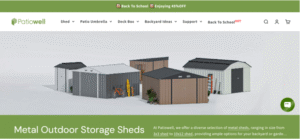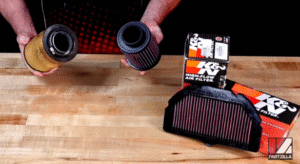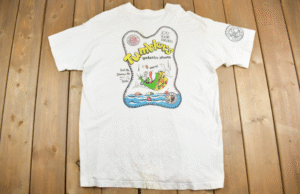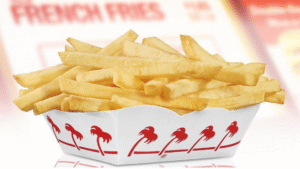
Have you ever wondered which precise metal machining method is better for your needs: sinker EDM vs CNC waterjet cutting? Both methods can create intricate metal parts, but each has its pros and cons. We’ll compare these advanced cutting technologies to help you choose the right one for your project.
Sinker EDM cutting excels at intricate internal shapes and contours, while CNC waterjet shines for multi-material cutting. But the best process depends on your specific application and priorities.
Whether it’s design complexity, material options, or post-cut finish quality, both EDM and waterjet cutting have their advantages. In the following sections, we’ll break down the characteristics of each technology for metal machining.
What is Sinker EDM?
Sinker electric discharge machining, or sinker EDM for short, is a precise manufacturing technique that uses controlled electric sparks to slowly erode away metal. Also known as die sinking electro-erosion, it allows you to create complex internal shapes and contours that would be very difficult with traditional cutting or forming methods.
Sinker EDM works by positioning a conductive electrode, usually made of graphite or copper, close to the metal workpiece submerged in a dielectric fluid like oil. This fluid acts as an insulator to prevent short circuits between the electrode and workpiece. When a high enough voltage is applied, sparks jump across the small gap, heating the metal to extreme temperatures and vaporizing tiny amounts.
As the electrode is lowered slowly and precisely, it “sinks” into the raw material, taking its shape. With each spark, a tiny bit more material is removed from the workpiece. This happens automatically according to programmed cutting paths. The di-electric fluid keeps temperatures low to prevent warping, and also flushes away metal particles.
Some key aspects of the sinker EDM process are:
- Setup includes programming cut paths and selecting machine settings
- The electrode follows the programmed complex shapes
- Material removal happens gradually through thousands of tiny electric sparks
- Di-electric fluid acts as both insulator and coolant during the process
- Electrodes eventually wear out but can be replaced as needed
Sinker EDM cutting for metal excels at creating shapes that would be difficult or impossible with other machining methods. It can produce very tight tolerances down to 0.0001 inches.
Some common applications include injection molding, orthopedic implants, turbine components, and more. While slower than alternatives, it remains an invaluable precision machining technology.
What is CNC Waterjet Cutting?
CNC waterjet cutting is a precise machining process that uses a highly pressurized stream of water, and sometimes an abrasive material, to cut through virtually any material. Setting up a CNC waterjet involves loading material, importing cutting designs, verifying settings, and starting the automated process.
Powerful water pumps produce water jets with pressures over 60,000 PSI, allowing them to cleanly cut metals, glass, composites, and even stone or concrete with great precision.
CNC technology guides the waterjet along pre-programmed cutting paths to create 2D and 3D parts with tight tolerances. The waterjet nozzle is mounted to a gantry system similar to a milling machine, and CNC code determines where and how it will move. This automation enables complex nesting of multi-sided parts from a single sheet of material.
Some key aspects of CNC waterjet cutting include:
- Water pressure alone can cut softer materials, and abrasives added to jet cut hard metals faster
- Tolerances as low as ±0.002″ are achievable with skilled operation and machine upkeep
- No thermal effect on materials results in clean, damage-free edges
- Can cut nearly any material except diamond and tempered glass
The CNC waterjet cutting for metal is commonly used in various industries, including aerospace, automotive, medical, electronics, etc.
Sinker EDM vs CNC Waterjet Cutting for Metal: Which One Should I Choose?
Whether designing injection molded parts, automotive components, or medical devices, determining the best method for precision metal cutting is crucial. Let’s discuss sinker EDM vs CNC waterjet cutting methods for metals to determine how they can help manufacturers like you select the optimal technology for the job.
a. Machining Process
The EDM sinker method uses electric sparks to slowly melt away metal. A custom-shaped electrode sinks into the material to create a matching cavity. The electrode follows a programmed path to cut or form the workpiece.
Since there is no direct contact, EDM can machine sophisticated details and undercuts. It works well for intricate metal parts used in many industries.
Waterjet cutting uses extremely high water pressure to remove metal through erosive force. Instead of melting, the water jet blasts away the workpiece surface.
Regular water works on softer metals, but adding garnet abrasives to the stream gives it the power to cut harder metals precisely. The CNC guided water jet smoothly shapes the material along a programmed contour. Waterjet provides flexibility since it can cut many materials, like metal, plastic, and composites sandwich panels.
b. Tooling Requirements
Sinker EDM machining is a precise but more complicated process than waterjet cutting. For each sinker EDM job, a custom electrode needs to be created that exactly matches the shape you need to cut. This electrode, which could be graphite or copper, is carefully made using CNC machines. It gets inserted into the machine and electricity is used to slowly erode away the metal along the electrode shape.
The liquid used is also different between the two processes. Sinker EDM uses oil as its liquid while waterjet cutting uses high-pressure water. This oil sits in a tank surrounding the metal and electrode. Waterjet cutting has an advantage here since water is easier to use than oil and doesn’t require cleaning between jobs.
While sinker EDM shapes parts very precisely, waterjet cutting has the edge when it comes to quick changeovers. Since it doesn’t use any tools, the same waterjet cutting nozzle can cut different materials and thicknesses just by adjusting the water stream settings. Sinker EDM needs a new custom electrode created for each new part, taking time. This means waterjet cutting saves both time and money by letting you easily switch between different jobs.
c. Geometry and Design Capabilities
With sinker EDM, you can create intricate 3D shapes that exactly match the machine’s electrode. The electrode shape limits designs but it’s possible to make cavities and complex interior pockets.
Waterjet cutting can’t match complex electrode shapes but offers more design freedom. You can cut parts with their exact dimensions and angles programmed into the CNC.
For example, sinker EDM would excel at mold inserts needing deep internal details. The electrode serves as a pattern. Meanwhile, waterjet excels at one-off prototypes requiring modifications. You can cut tapers, chamfers, and precision machining parts with complex geometry.
d. Material Thickness
When cutting shapes in thick metal parts, sinker EDM has the advantage. This electrical discharge machining process uses electric sparks to slowly carve intricate forms inside metal materials. Since the tool penetrates into the piece, sinker EDM works well for making enclosed cavities in thick steel, aluminum, and other metals.
Waterjet machines can do precise cutting through most materials. Even thick steel plates can be shaped accurately and without much waste material. It’s also much faster. The water stream cuts metal smoothly and quickly. It can also handle a wider range of workpiece thicknesses, from thin foil to thick plate.
Sinker EDM works best within a certain depth range. Another benefit of waterjet cutting is its ability to cut non-metal materials too. Materials like rubber, plastic, and wood can all be cleanly cut using this versatile CNC technique.
e. Precision of Cutting
Comparing sinker EDM vs CNC waterjet cutting, both have their strengths for precision cutting of metal. Sinker EDM is well known for being very precise, usually within 0.0001 inches. Some high-end wire EDM machines can even cut within 0.0005 inches! That’s extremely precise.
Waterjet cutting isn’t as precise as EDM but it can still make very accurate cuts too. The machines can achieve around 0.002 inches, which is good enough for most jobs. Many shops can guarantee cuts within 0.005 inches. That means water-jetting is a cost effective option for parts that don’t need to be as precise as EDM.
f. Surface Quality
Sinker EDM can produce a rougher surface than waterjet cutting. This is because the electric sparks happen along the tool edges during EDM, which aren’t always as smooth as the wire used in wire EDM. While the surface isn’t perfectly smooth, it’s usually not a big issue for functional parts.
Waterjet cutting gives very nice smooth surfaces right off the machine. The edges are usually ready for use without any extra sanding or filing needed. Several things affect the final surface, like the water pressure and speed. And adjusting these settings can optimize the surface quality.
The surface of waterjet cut metal has a look similar to sandblasted metal. It’s smoothest at the top edge and roughest at the bottom. You may see vertical lines from movements in the high-power water stream. Unless the material is very thin, these lines aren’t very noticeable. Cutting faster makes the lines bigger, while slower cuts can give surfaces a smoother feel.
Which Cutting Method to Choose: Sinker EDM vs CNC Waterjet
Both sinker EDM and CNC waterjet can accurately shape sheet metal, but each has strengths for different applications.
Sinker EDM can form complex interior details for injection molds, dies, and automotive components. Since the electrode penetrates deep inside, the technique is great for intricate 3D geometries in thick metal workpieces. However, creating a new electrode for each unique part design takes extra time.
Waterjet cutting can’t cut shapes as deeply as sinker EDM, but offers more flexibility. No special tooling is needed, so changing designs is quicker. It can precisely cut various materials like plastic, wood, composites, and metal. It works through a wide thickness range and produces a smooth surface finish suitable for sheet metal prototypes and other similar things.
When choosing, consider your part and production needs. Sinker EDM excels for mold cavities and tooling insert designs. Water-jetting is better for one-off prototypes or cutting different materials without long changeover times. Consider sunk costs and needed precision levels too. With an understanding of capabilities, you can select the optimal metal cutting method for each manufacturing task.
For your better understanding, check the following sinker EDM vs CNC waterjet comparison table:
| Feature | Sinker EDM | CNC Waterjet |
| Machining Process | Uses electric sparks to melt and remove metal | Uses high-pressure water jet to erode metal |
| Tooling Requirements | Requires custom-shaped electrode for each part | No tooling required, uses water and abrasive |
| Geometry and Design Capabilities | Excellent for intricate 3D shapes and cavities | Good for complex 2D shapes and some 3D profiles |
| Material Thickness | Best for thick materials and deep cavities | Can cut a wide range of thicknesses, including thin materials |
| Precision of Cutting | Extremely precise (0.0001 inches or better) | Good precision (0.002-0.005 inches) |
| Surface Quality | Rougher surface finish | Smooth surface finish |
| Applications | Molds, dies, tooling, complex 3D parts | Prototyping, one-off parts, various materials, large parts |
Conclusion
Choosing between sinker EDM vs CNC waterjet cutting depends on your specific part designs, material requirements, production volumes, and priorities like speed or surface quality. Both techniques offer benefits for precise metal fabrication. With an understanding of their strengths, you can determine which advanced machining process is best suited for individual applications.
Need advanced precision machining? Zintilon offers customized precision EDM and CNC machining services for your unique project’s needs. Upload your design now for an instant quote and free analysis.







